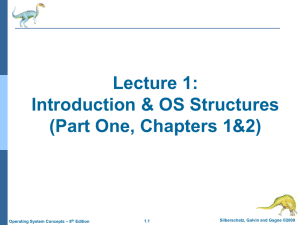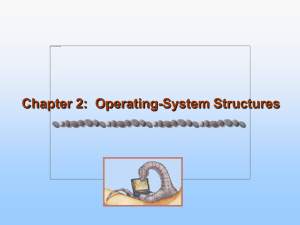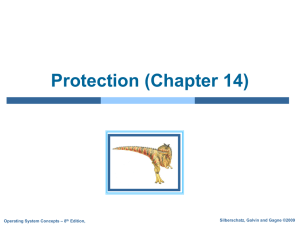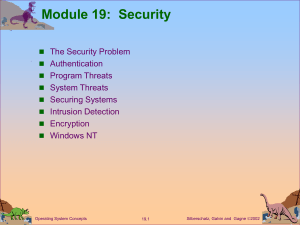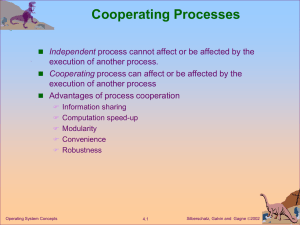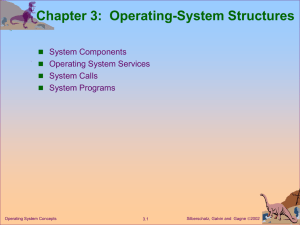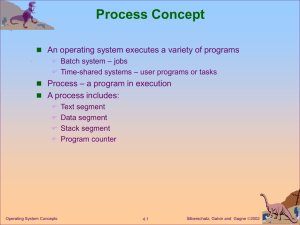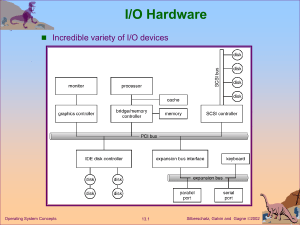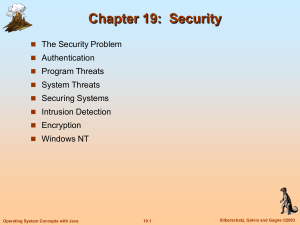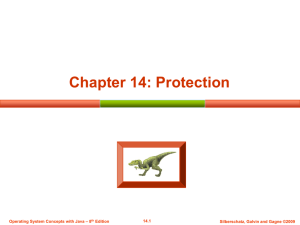國立中山大學資訊工程學系
advertisement
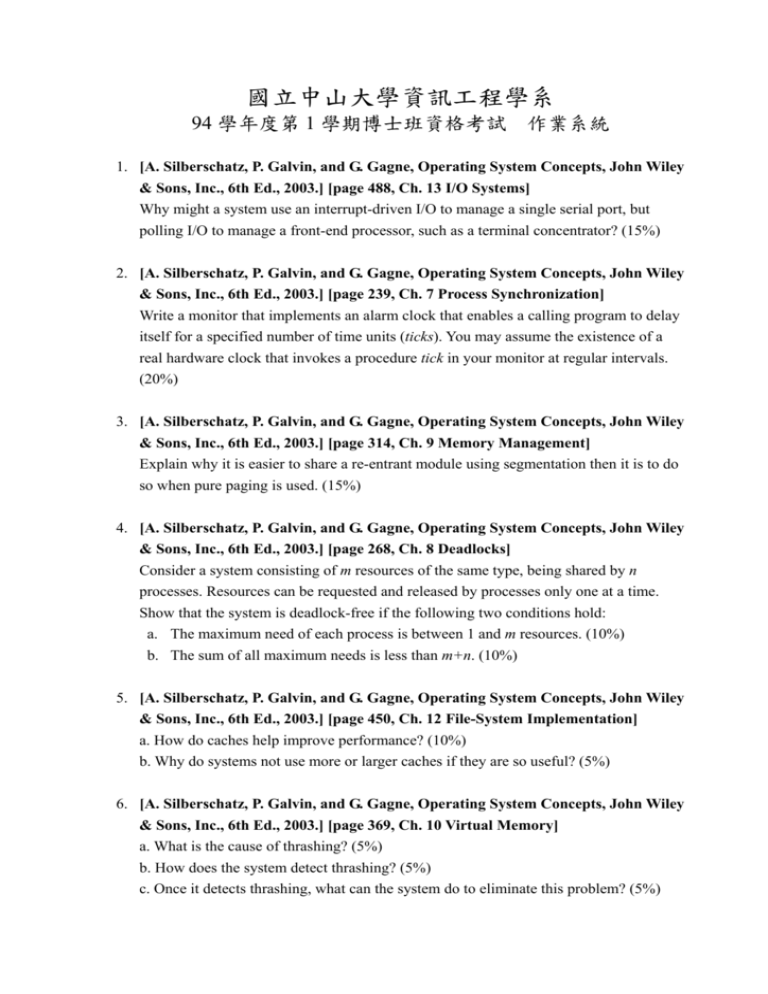
國立中山大學資訊工程學系 94 學年度第 1 學期博士班資格考試 作業系統 1. [A. Silberschatz, P. Galvin, and G. Gagne, Operating System Concepts, John Wiley & Sons, Inc., 6th Ed., 2003.] [page 488, Ch. 13 I/O Systems] Why might a system use an interrupt-driven I/O to manage a single serial port, but polling I/O to manage a front-end processor, such as a terminal concentrator? (15%) 2. [A. Silberschatz, P. Galvin, and G. Gagne, Operating System Concepts, John Wiley & Sons, Inc., 6th Ed., 2003.] [page 239, Ch. 7 Process Synchronization] Write a monitor that implements an alarm clock that enables a calling program to delay itself for a specified number of time units (ticks). You may assume the existence of a real hardware clock that invokes a procedure tick in your monitor at regular intervals. (20%) 3. [A. Silberschatz, P. Galvin, and G. Gagne, Operating System Concepts, John Wiley & Sons, Inc., 6th Ed., 2003.] [page 314, Ch. 9 Memory Management] Explain why it is easier to share a re-entrant module using segmentation then it is to do so when pure paging is used. (15%) 4. [A. Silberschatz, P. Galvin, and G. Gagne, Operating System Concepts, John Wiley & Sons, Inc., 6th Ed., 2003.] [page 268, Ch. 8 Deadlocks] Consider a system consisting of m resources of the same type, being shared by n processes. Resources can be requested and released by processes only one at a time. Show that the system is deadlock-free if the following two conditions hold: a. The maximum need of each process is between 1 and m resources. (10%) b. The sum of all maximum needs is less than m+n. (10%) 5. [A. Silberschatz, P. Galvin, and G. Gagne, Operating System Concepts, John Wiley & Sons, Inc., 6th Ed., 2003.] [page 450, Ch. 12 File-System Implementation] a. How do caches help improve performance? (10%) b. Why do systems not use more or larger caches if they are so useful? (5%) 6. [A. Silberschatz, P. Galvin, and G. Gagne, Operating System Concepts, John Wiley & Sons, Inc., 6th Ed., 2003.] [page 369, Ch. 10 Virtual Memory] a. What is the cause of thrashing? (5%) b. How does the system detect thrashing? (5%) c. Once it detects thrashing, what can the system do to eliminate this problem? (5%)
